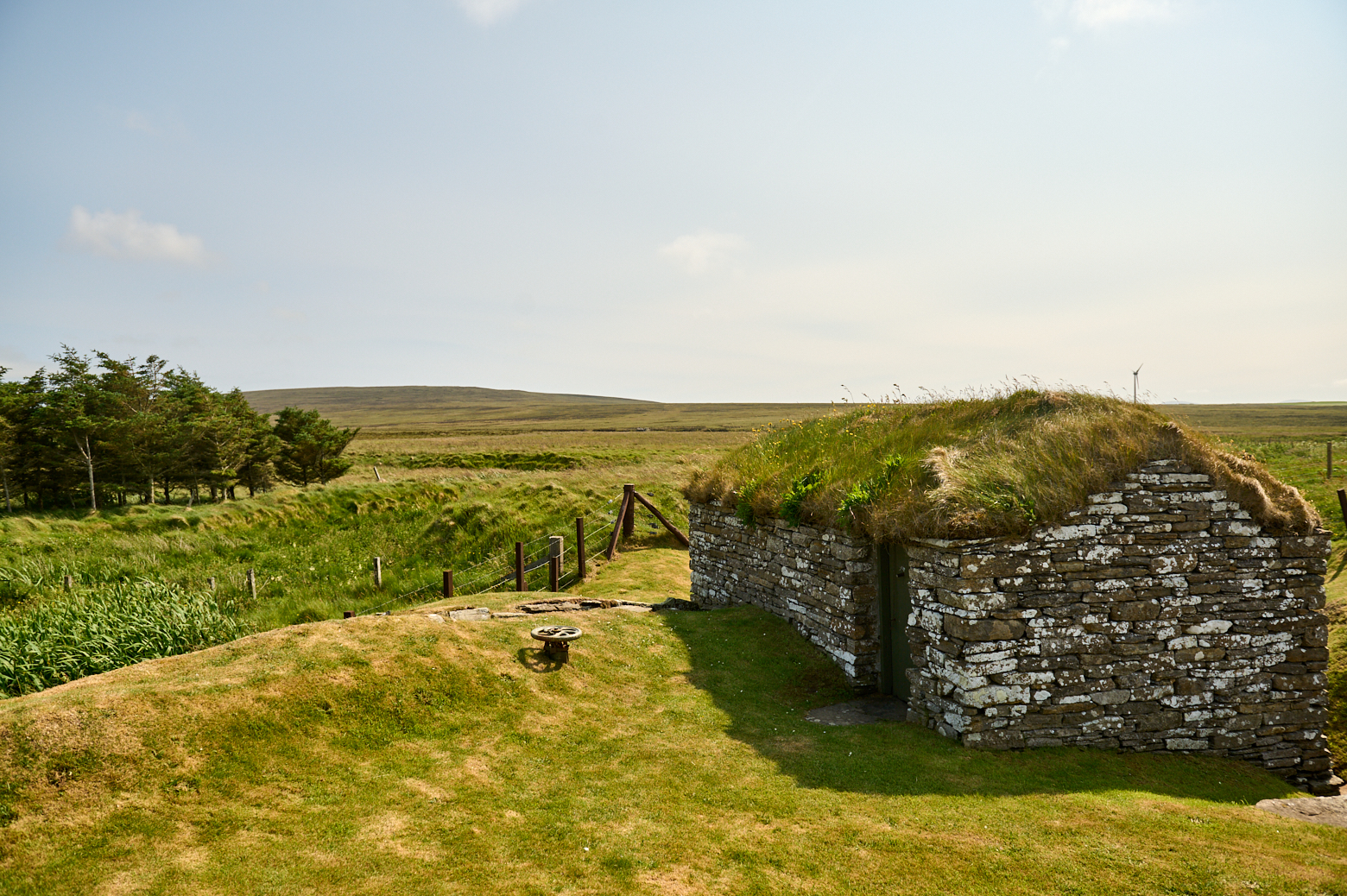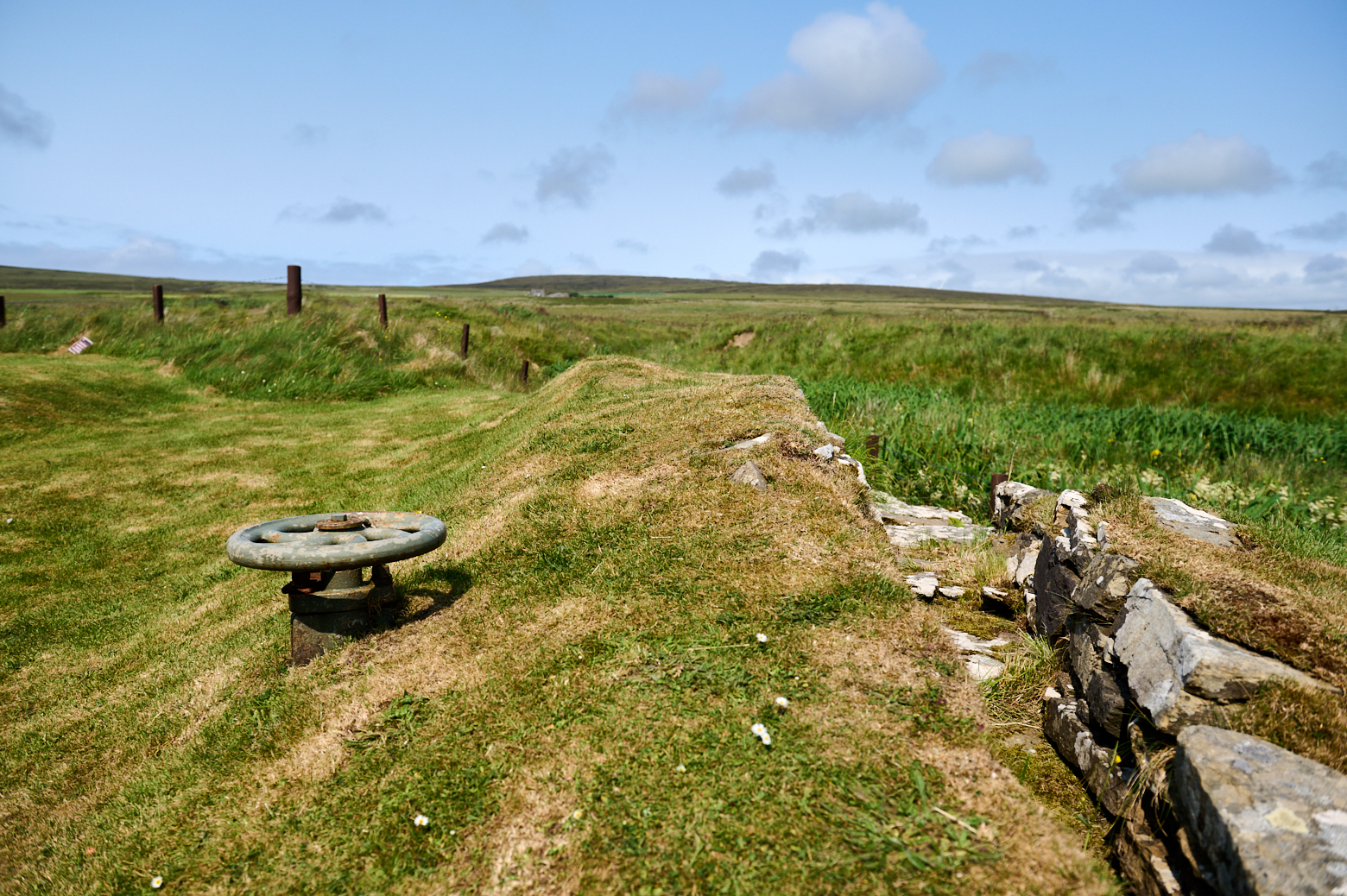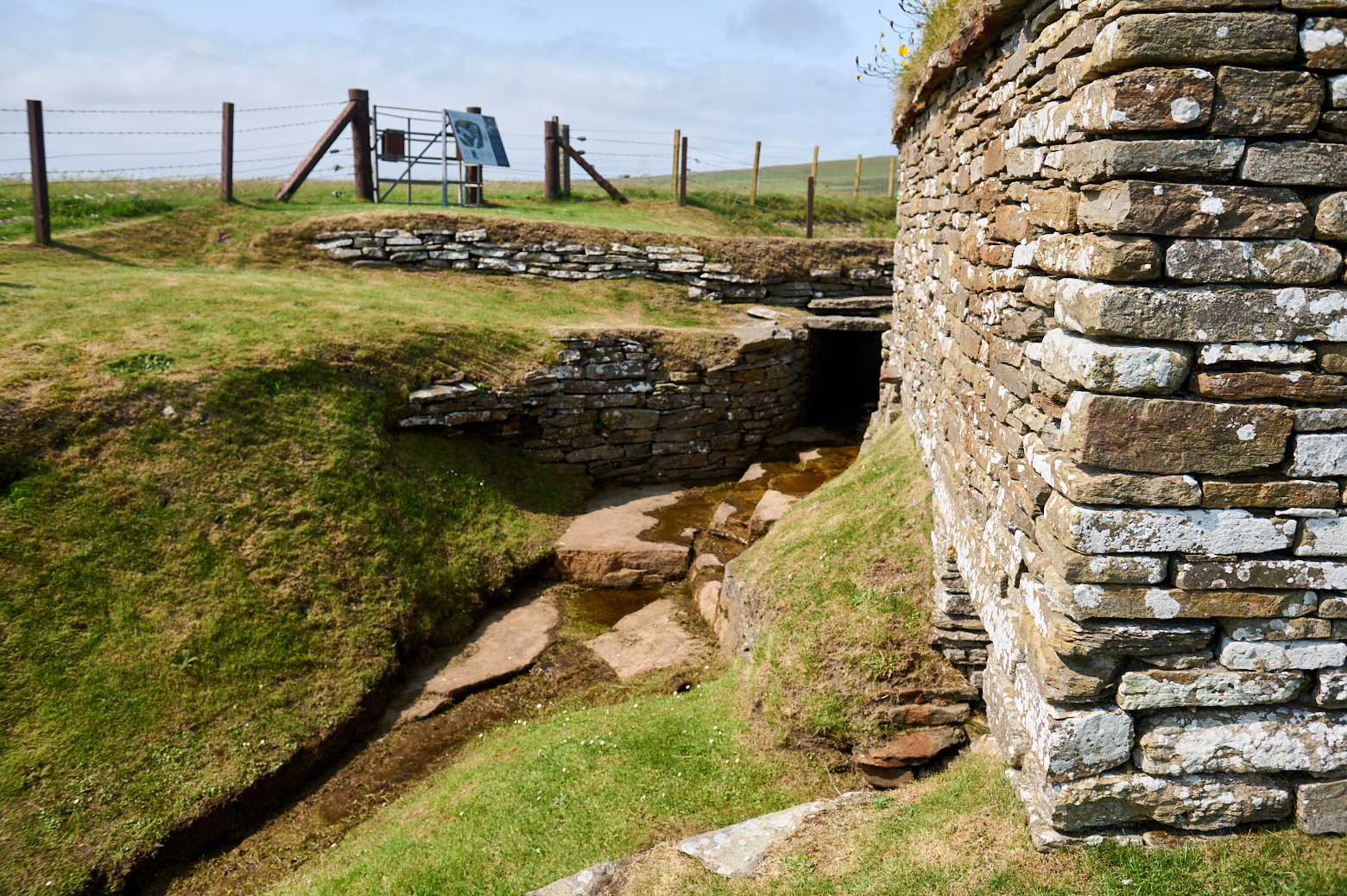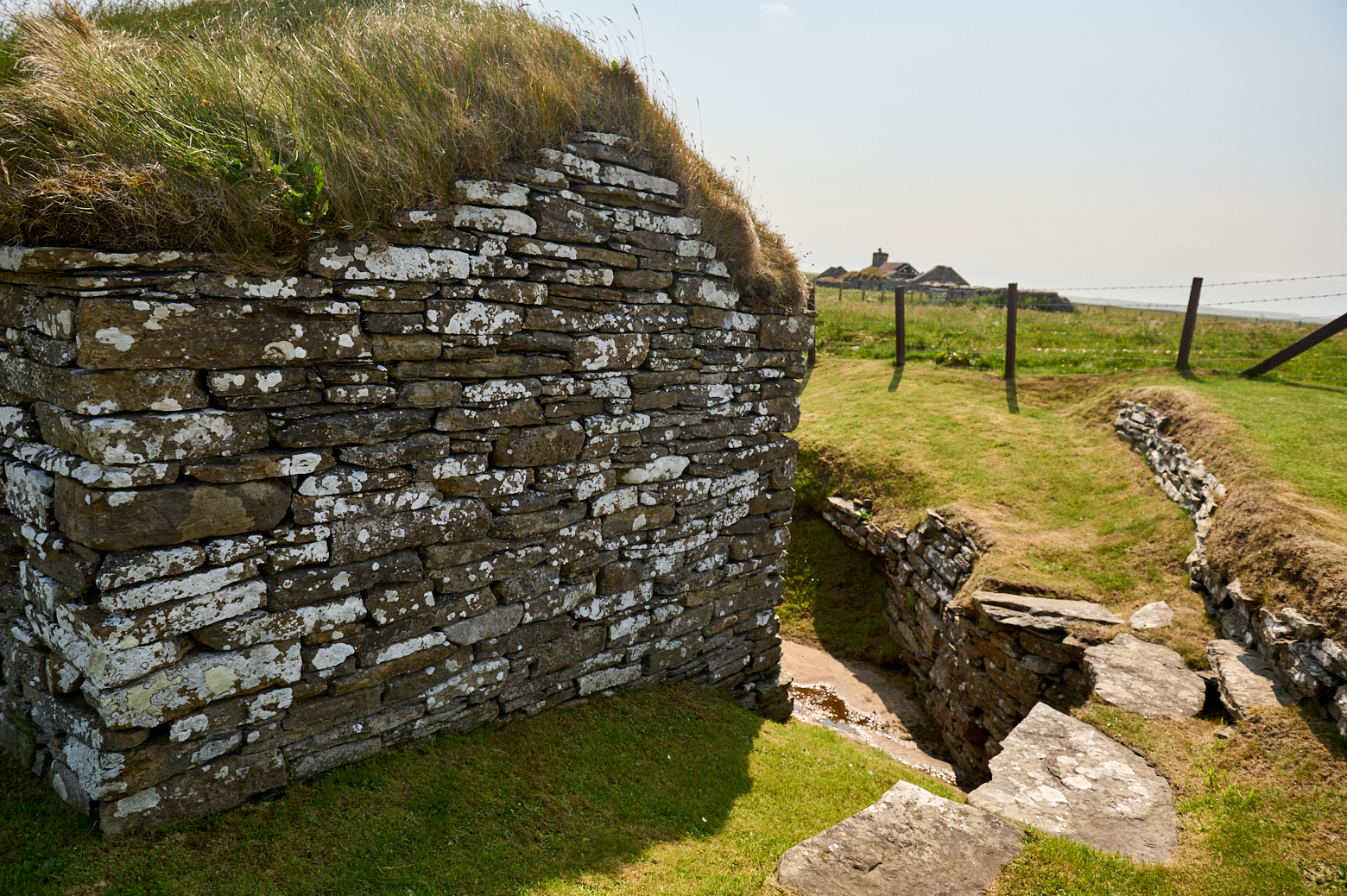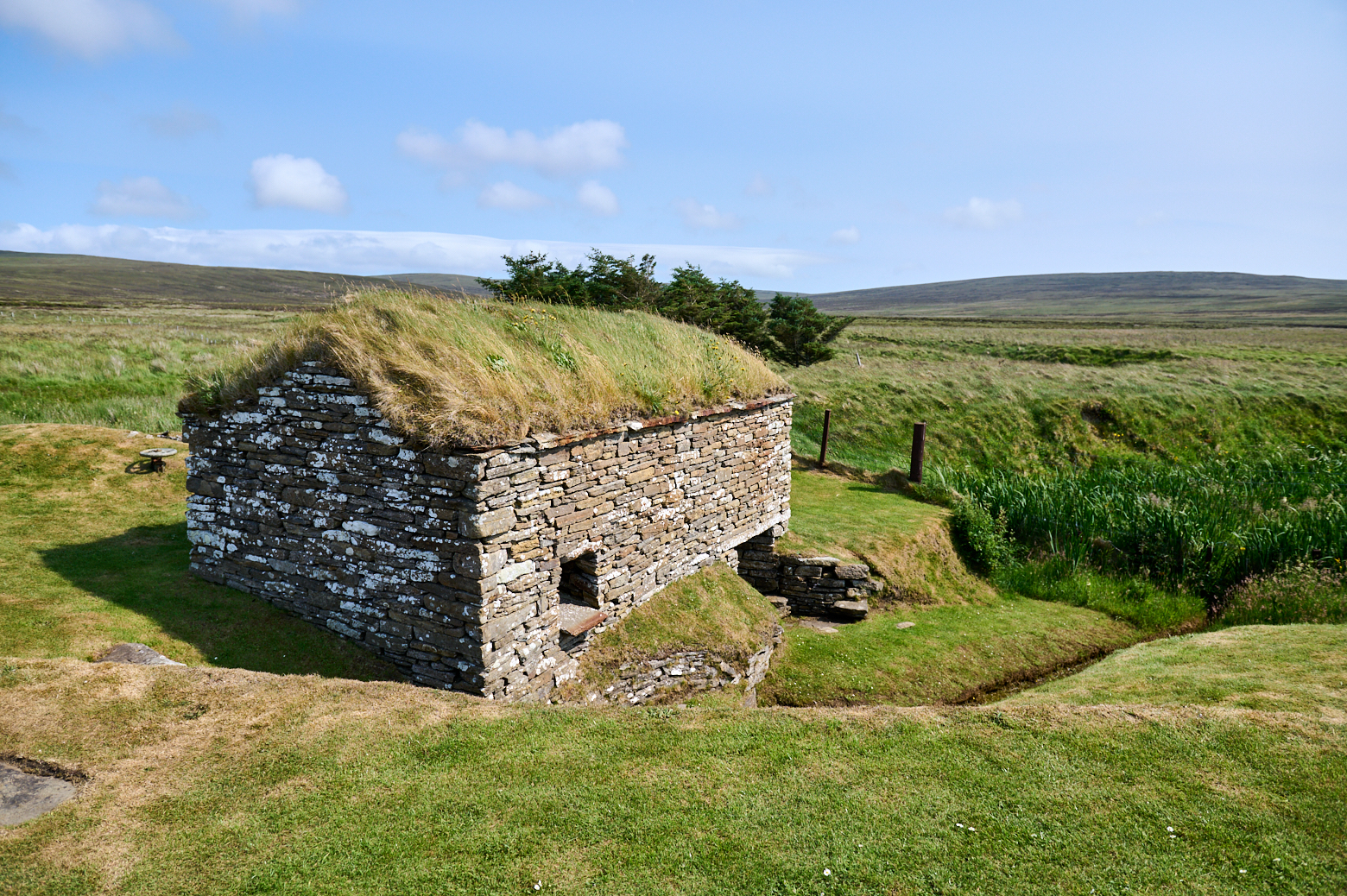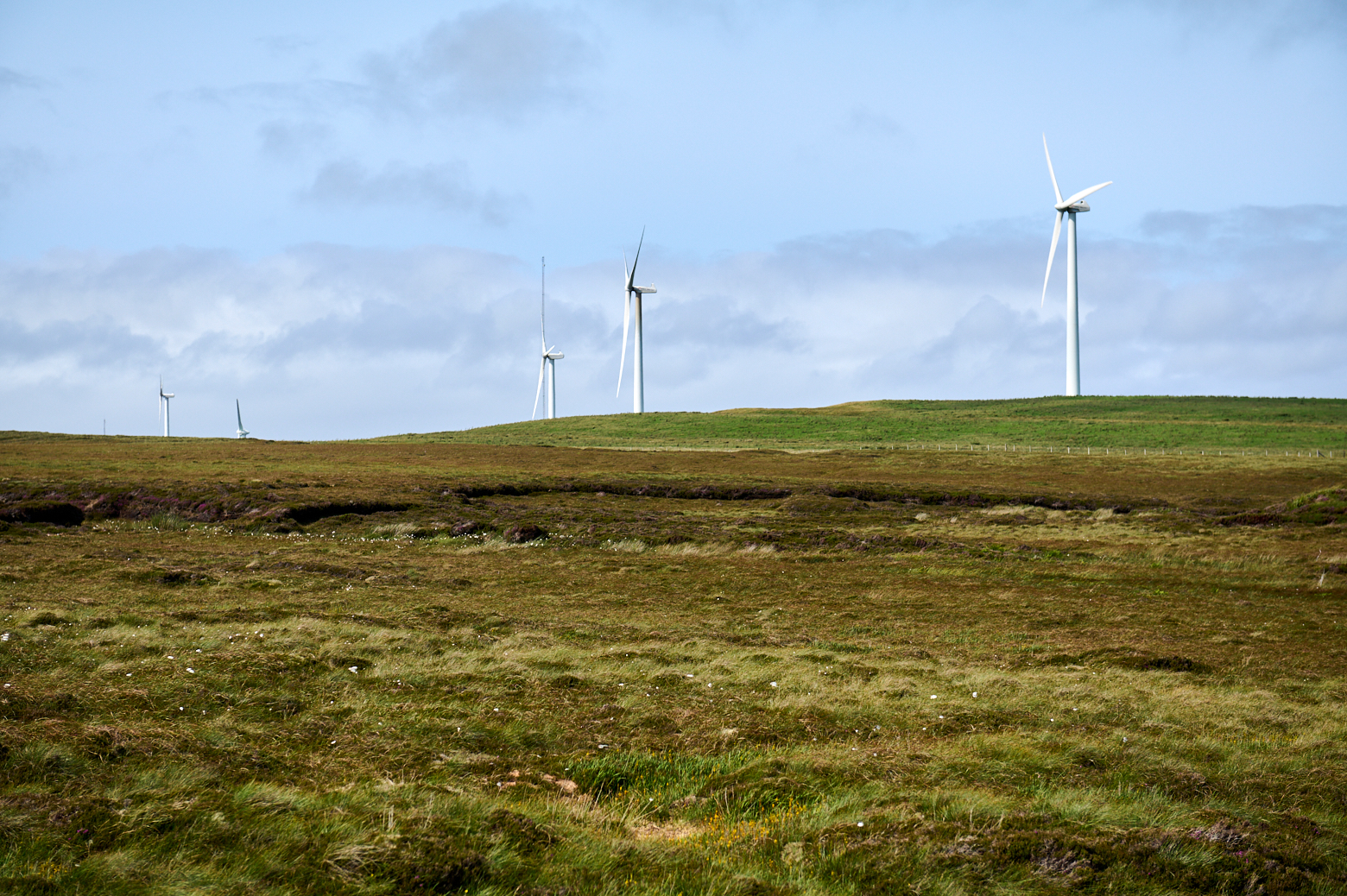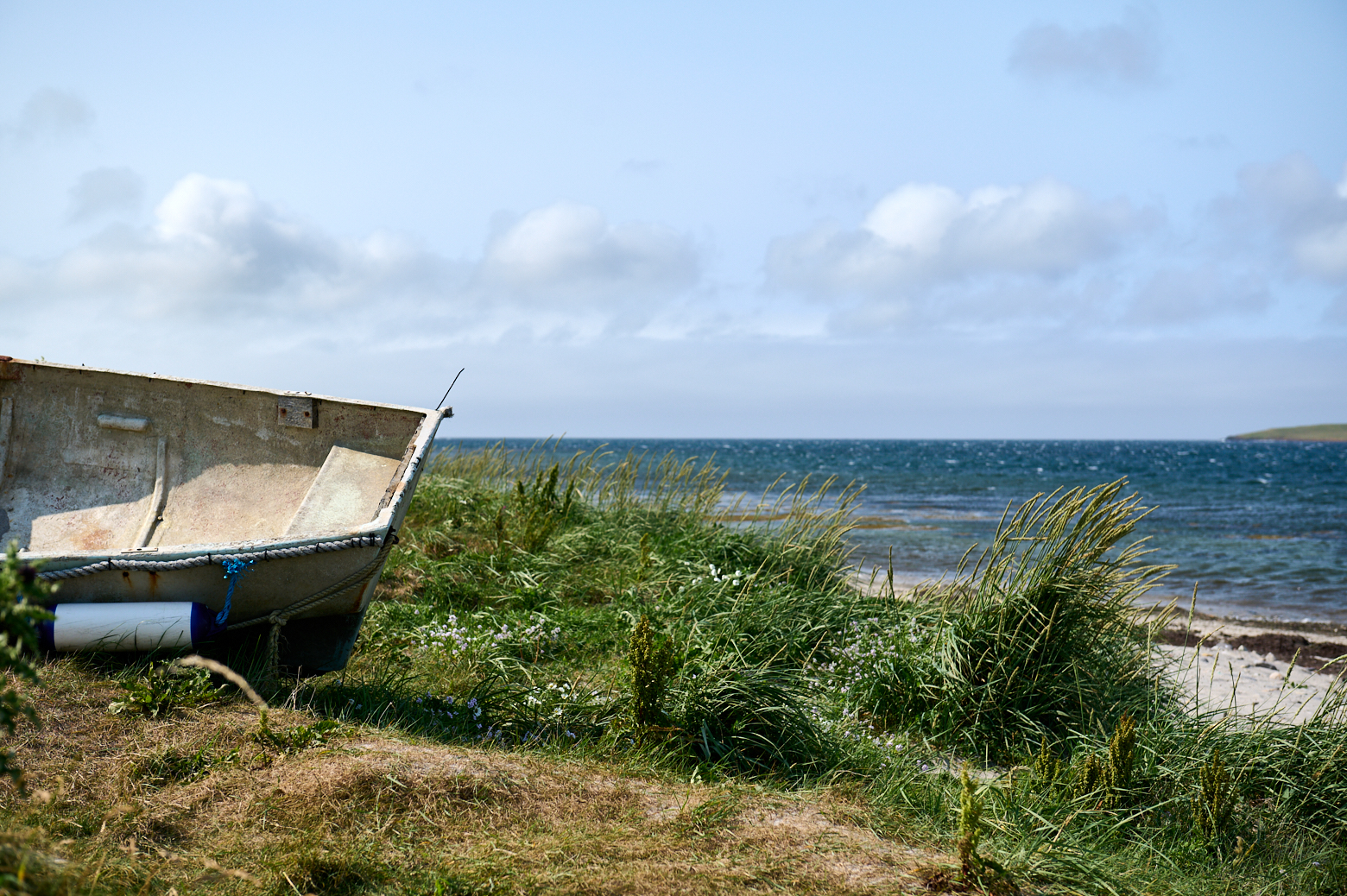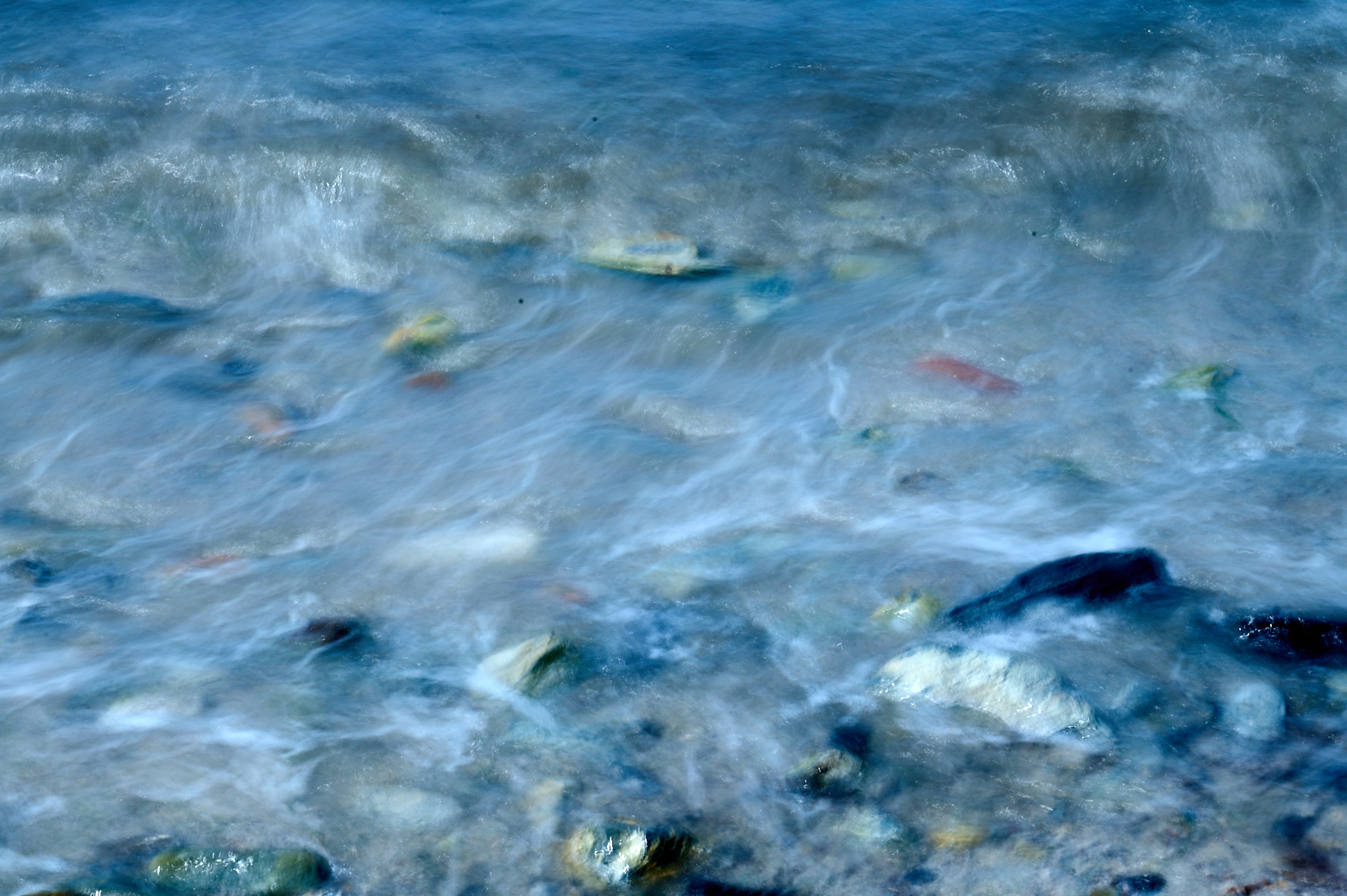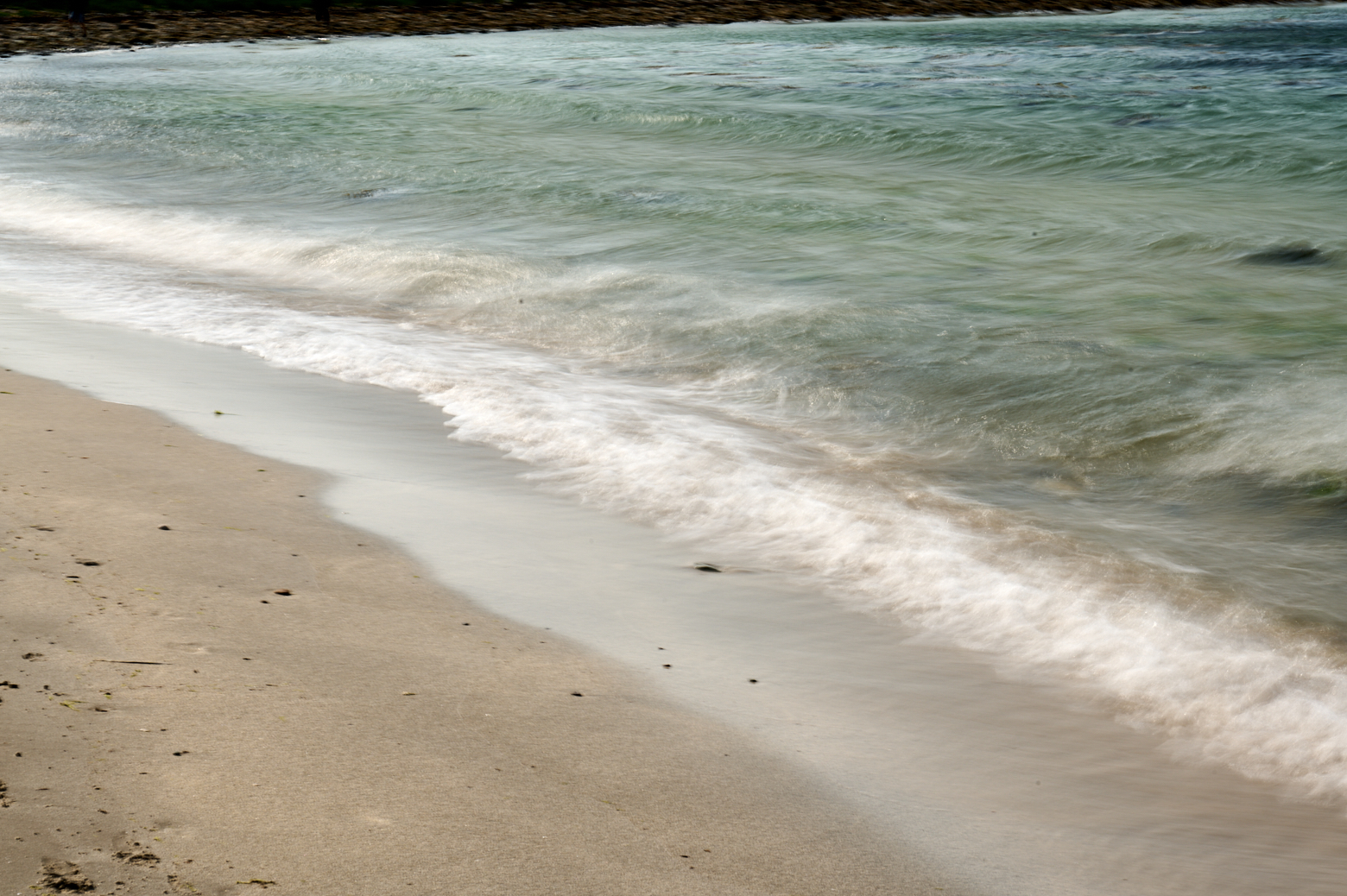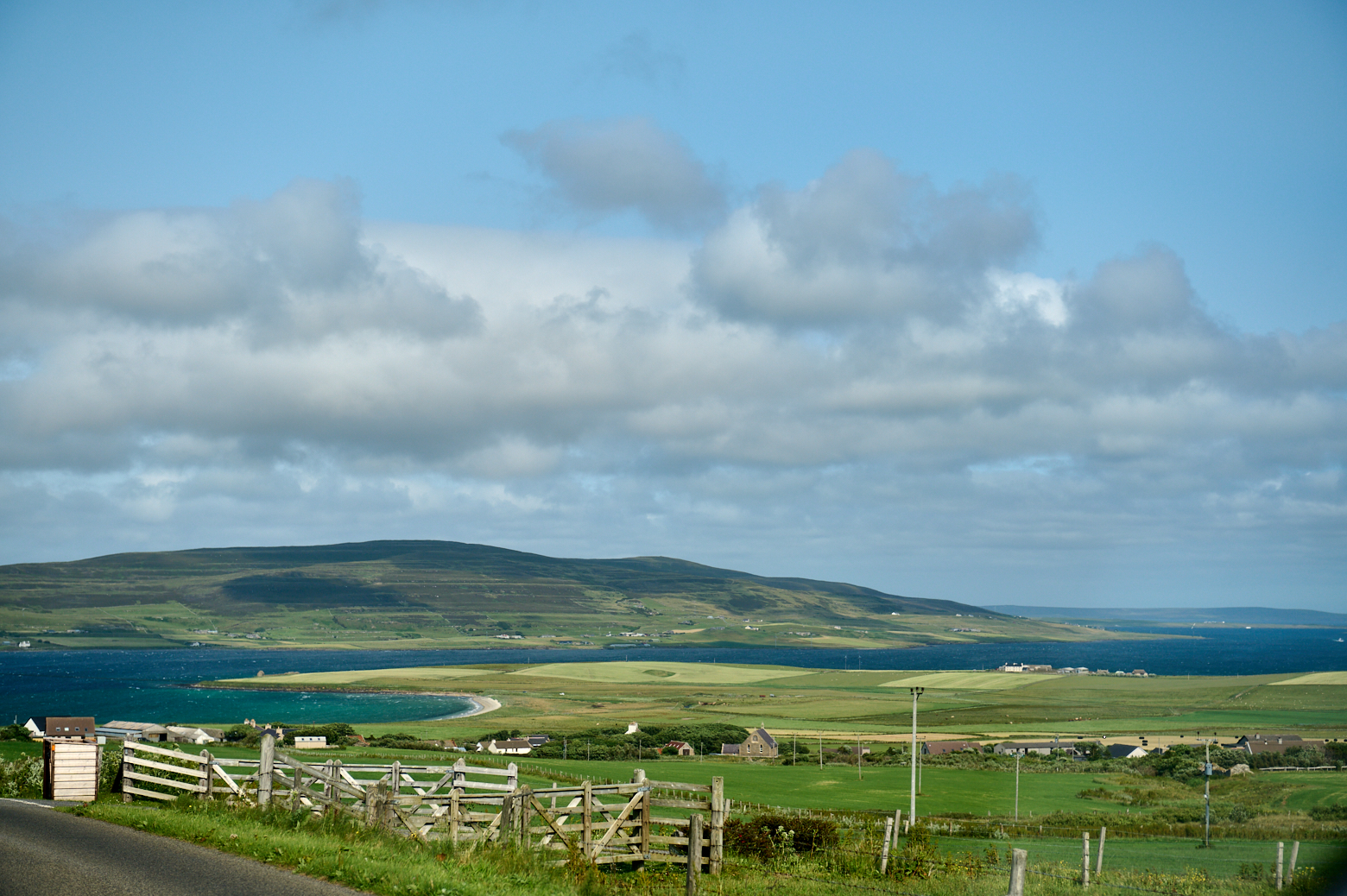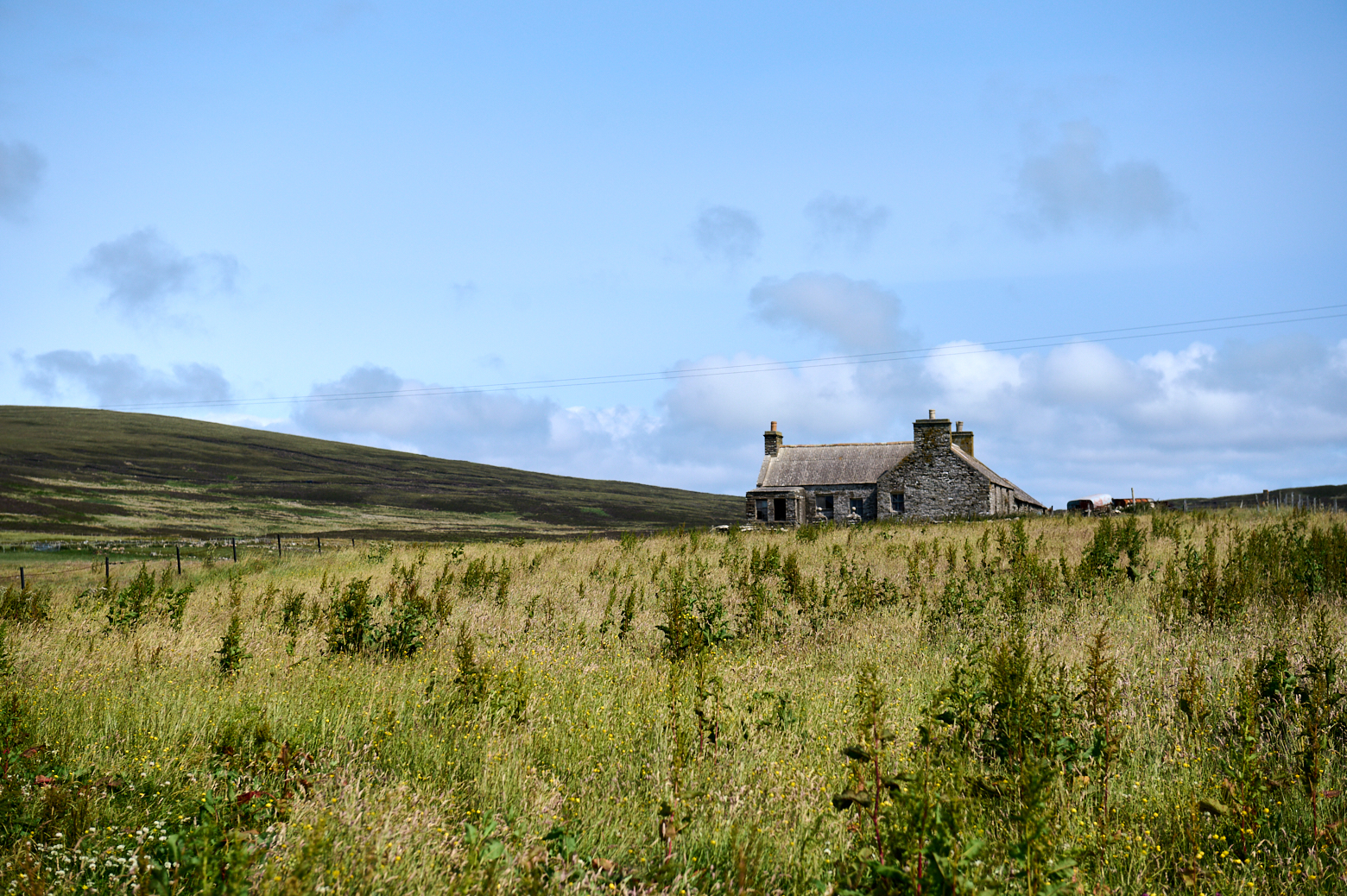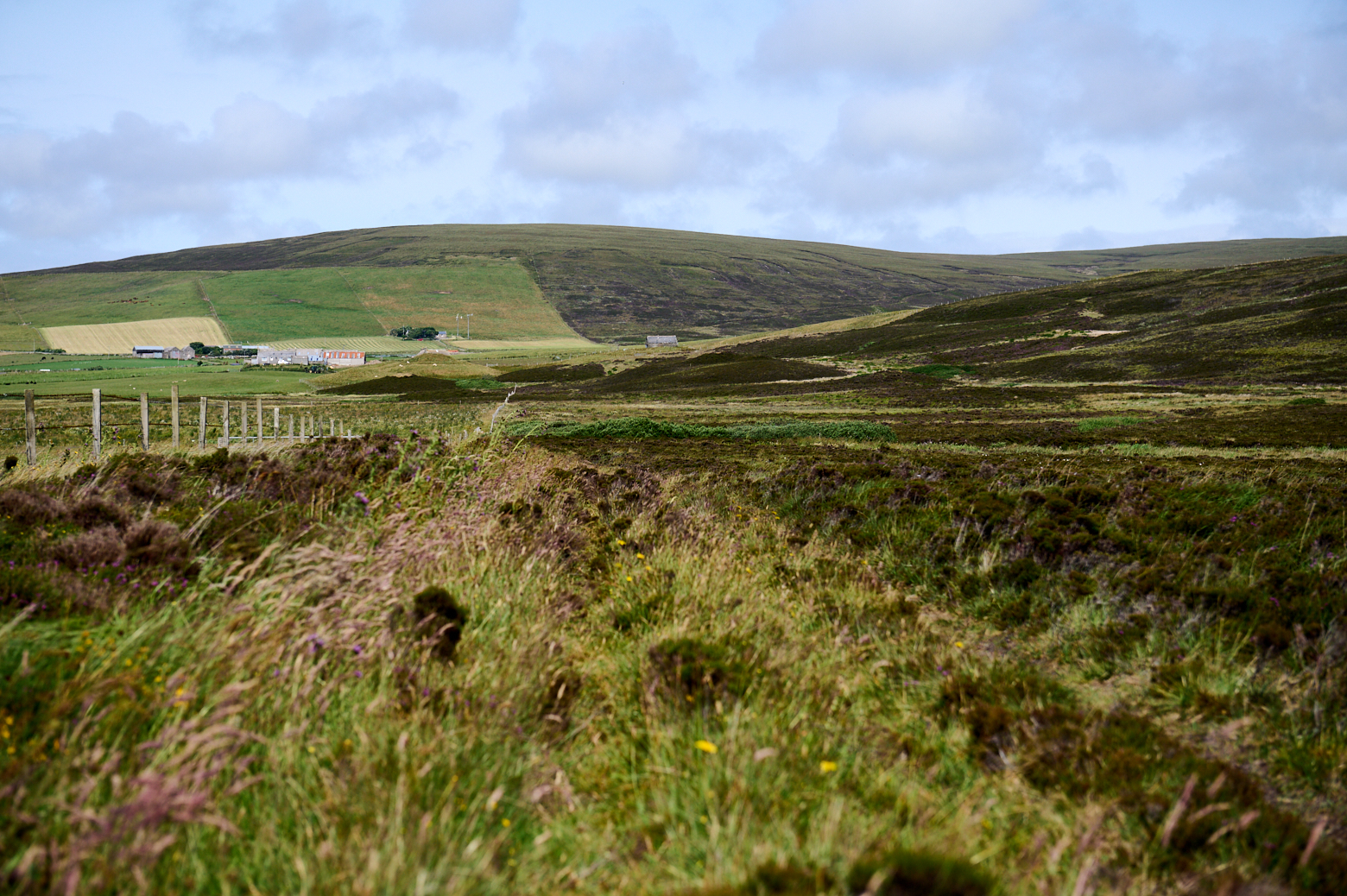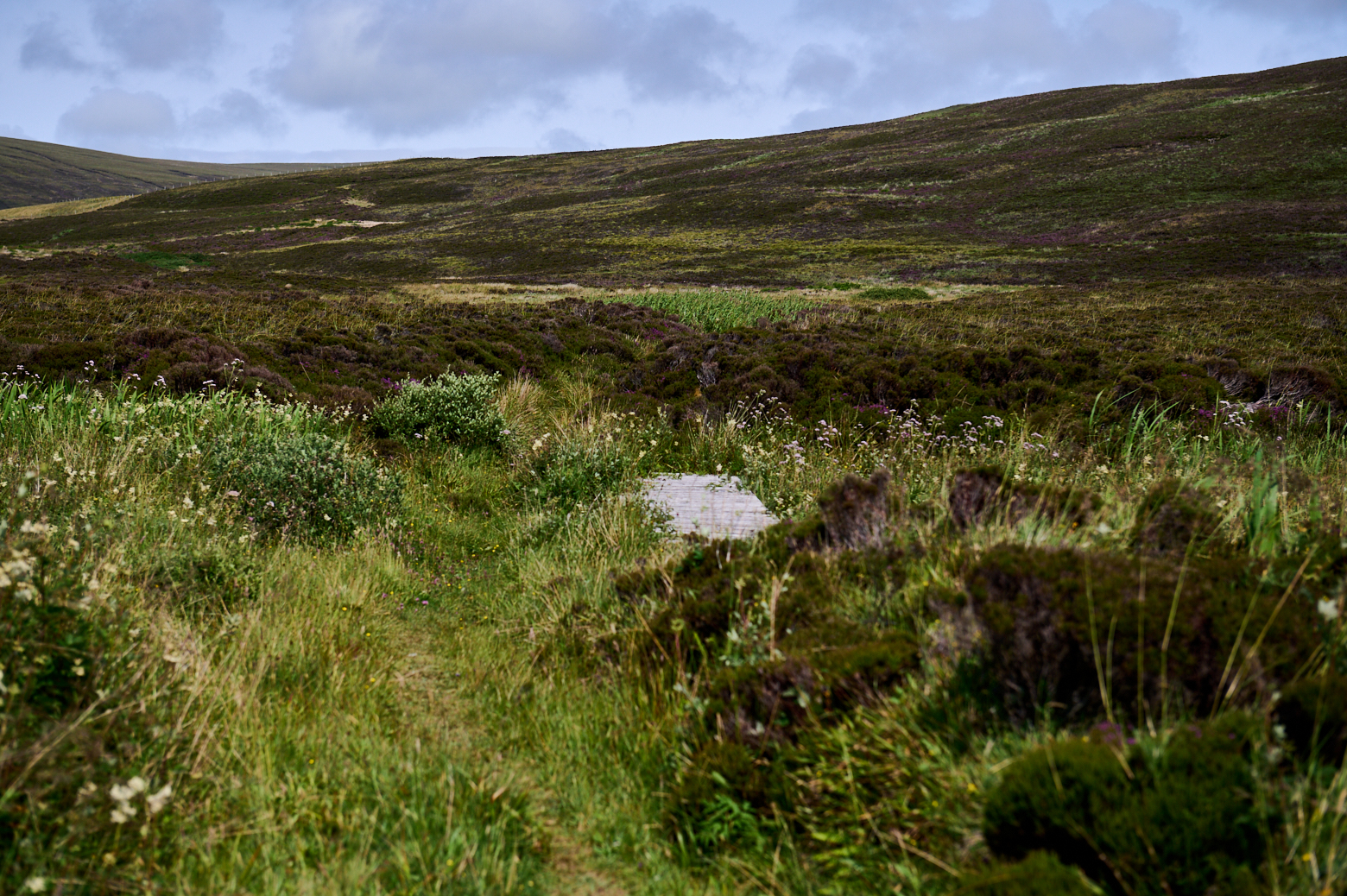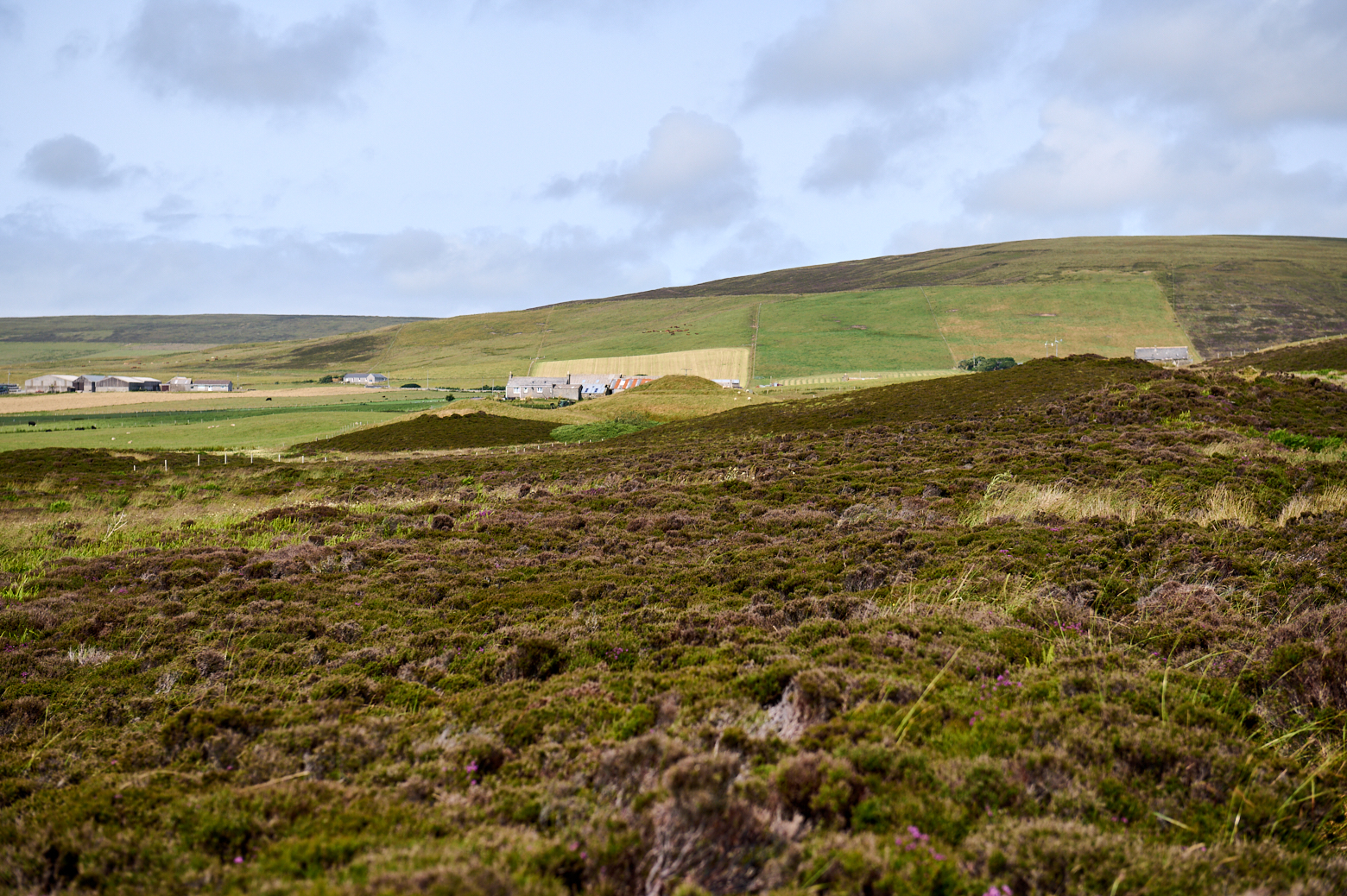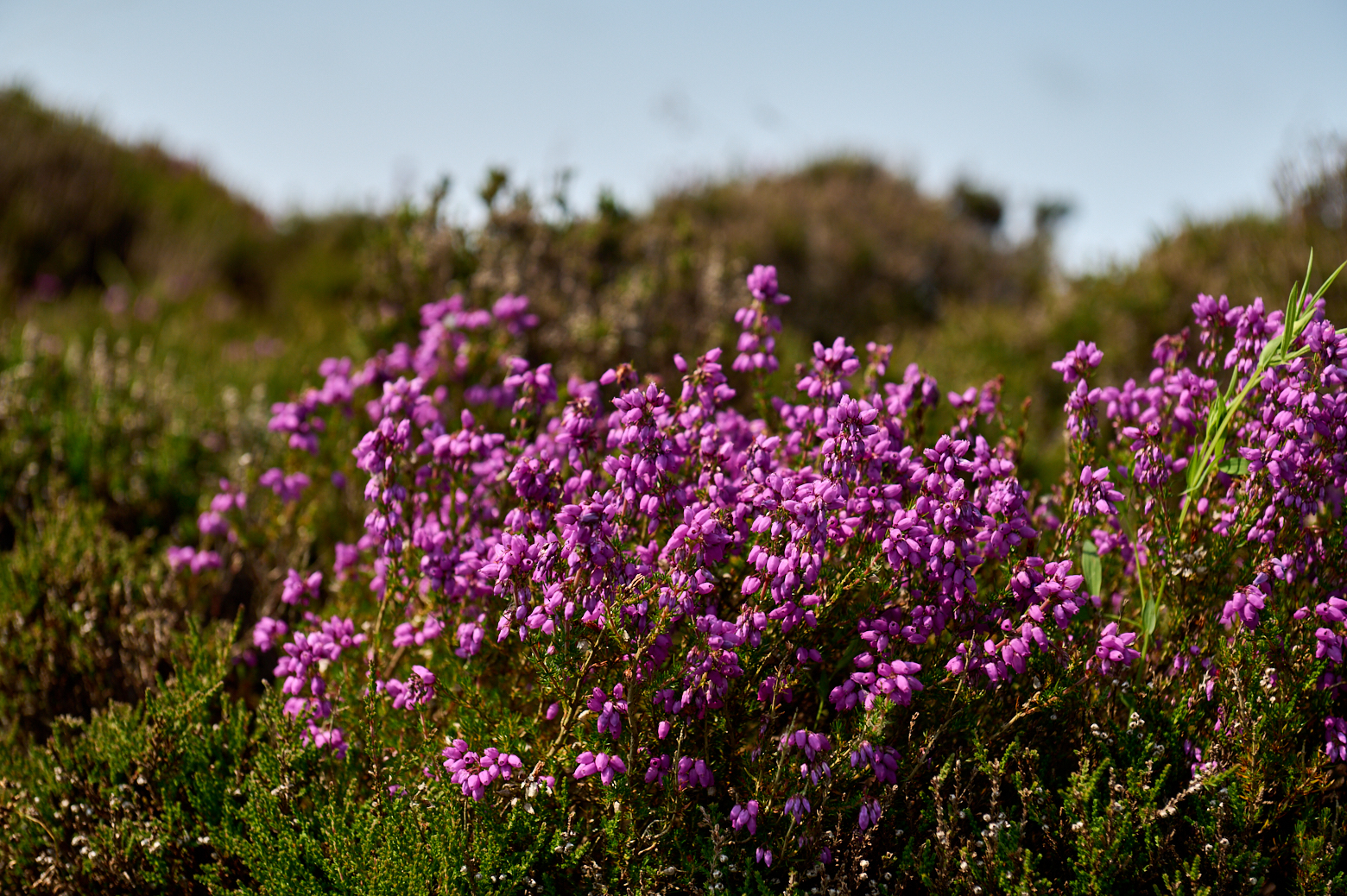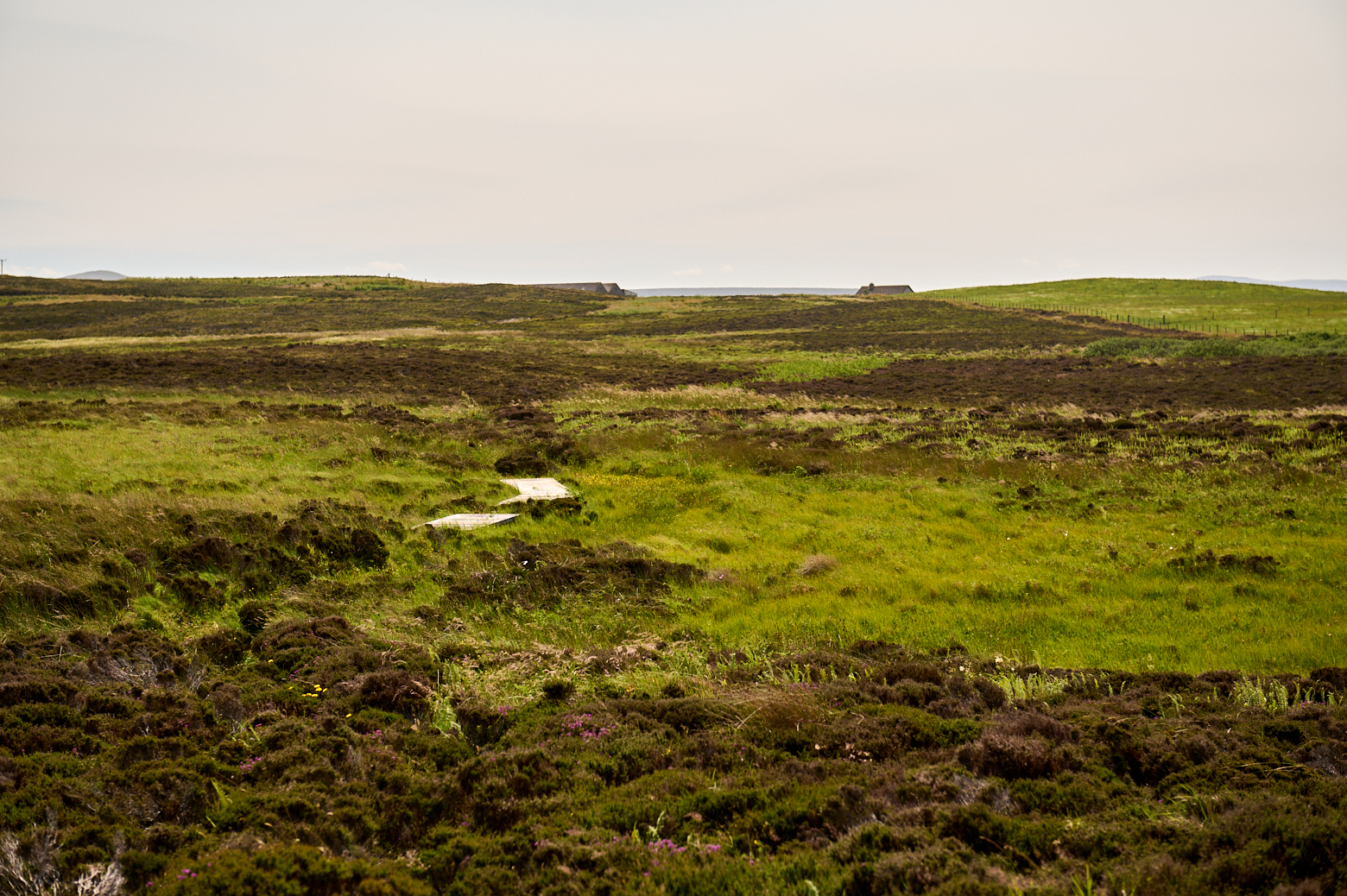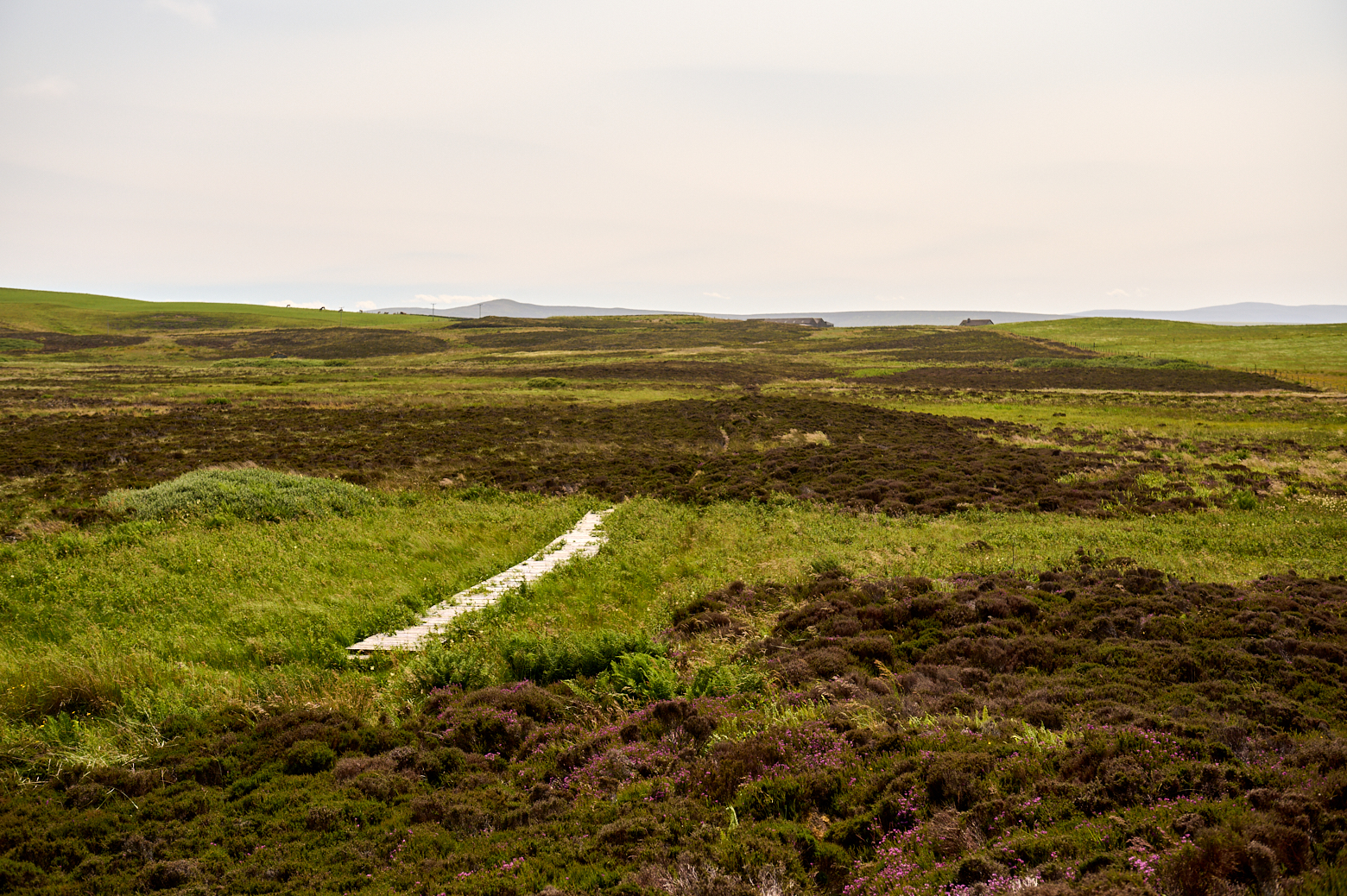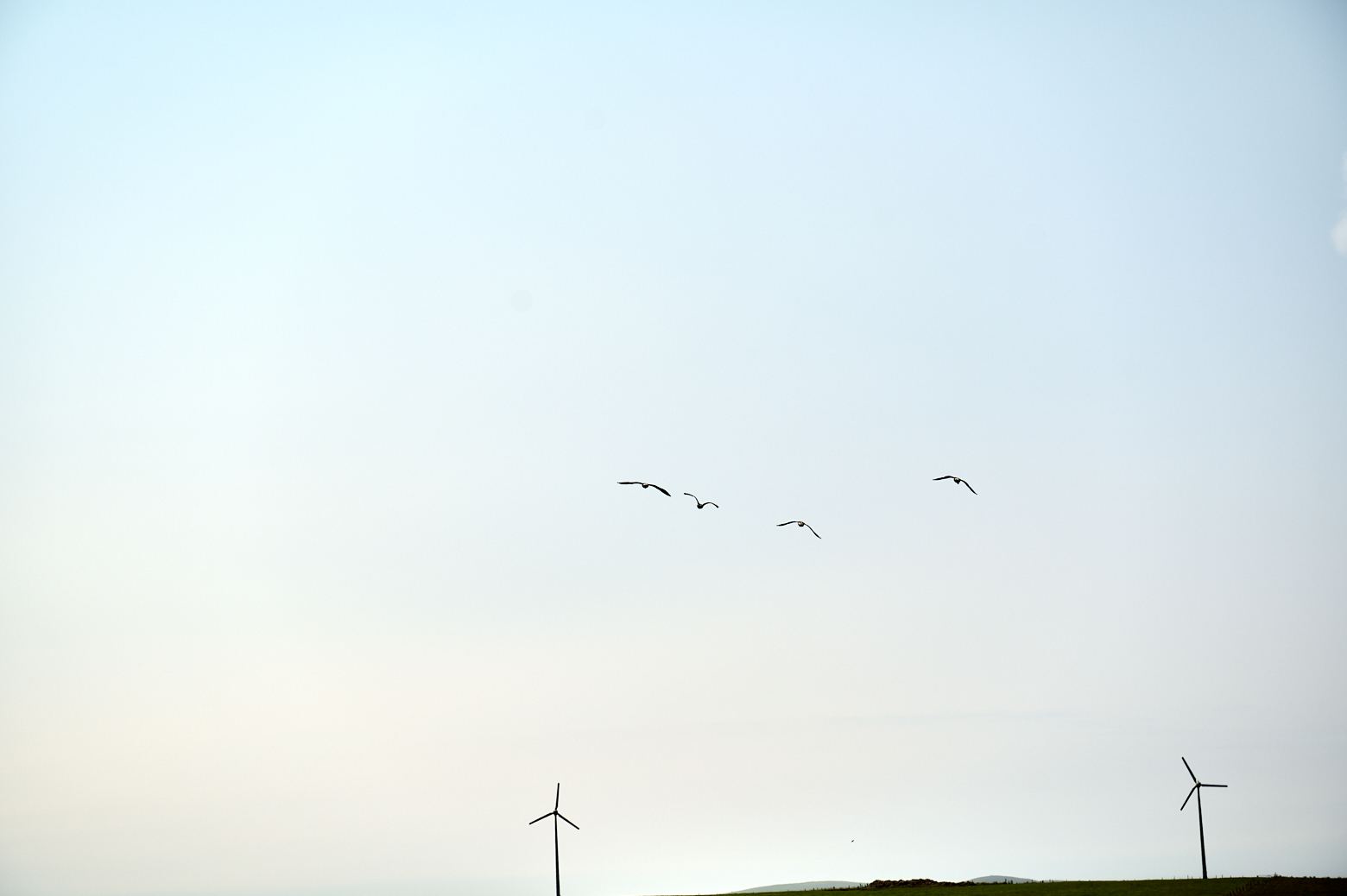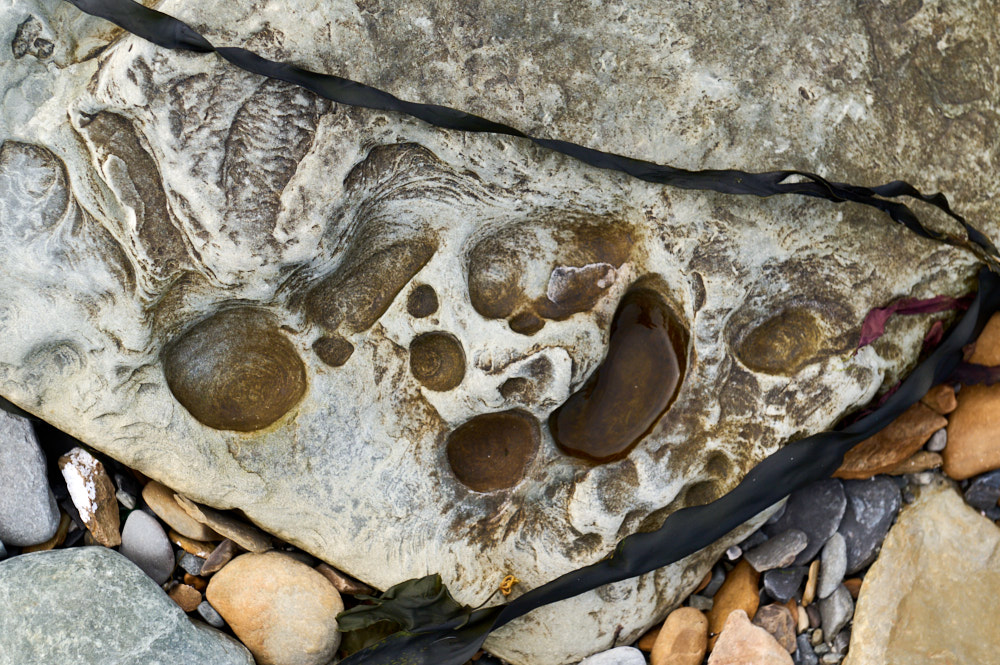
From the Earl´s Palace, it was just a short drive to get to the parking for the Isle of Birsay, a tidal island linked to the headland by a concrete causeway visible only when the sea retreats. It is about a two-hour window before and after low tide that allows us to cross the causeway to visit the island.
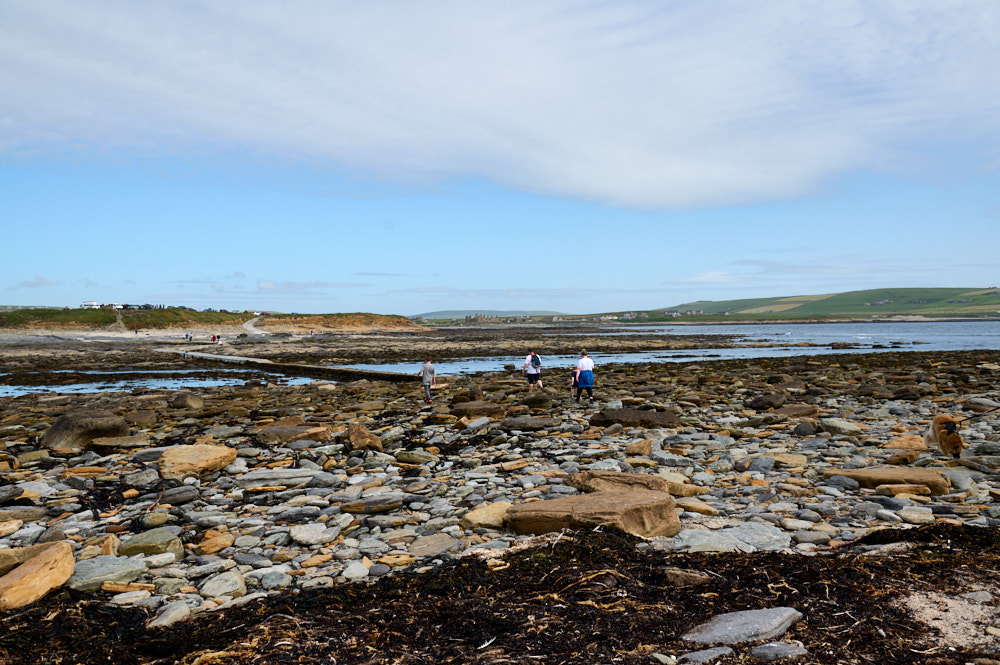
After a few minutes of crossing the causeway and the stony beach, we arrive at the Isle of Birsay and are greeting by the Broch of Birsay
Broch of Birsay
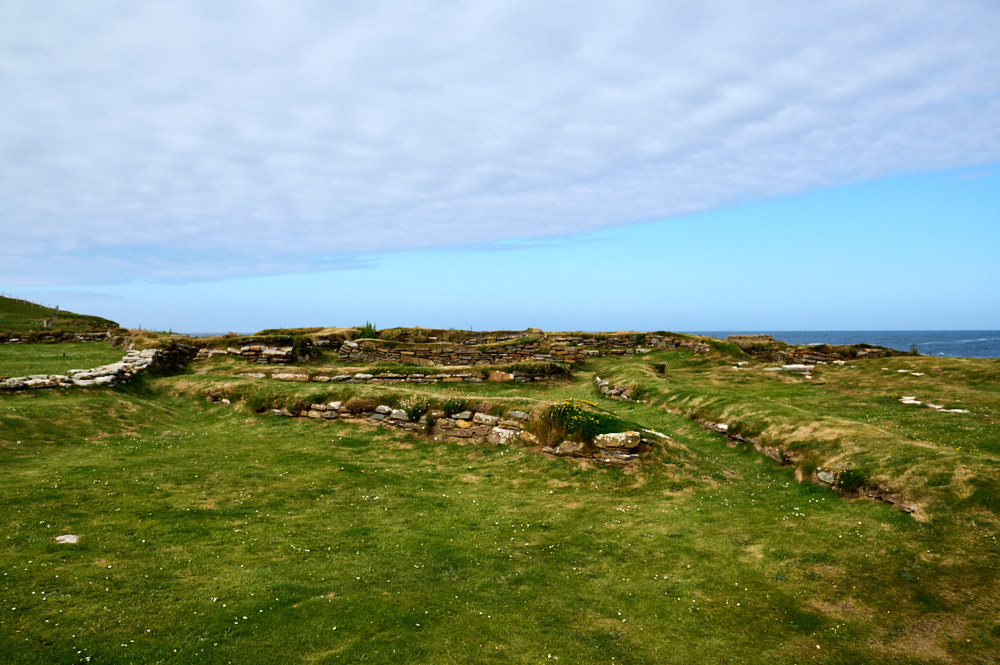
The historic site was not officially open, but it was possible to walk around the grounds. I think usually there is a little museum and maybe a ranger on site. But walking around this former settlement was lovely and very interesting.

The island hosts the remains of a substantial Pictish settlement, with evidence of Viking buildings visible too. The site of the Norse structures included a ruined Romanesque church that was a place of pilgrimage in the Middle Ages. (Orkney.com)
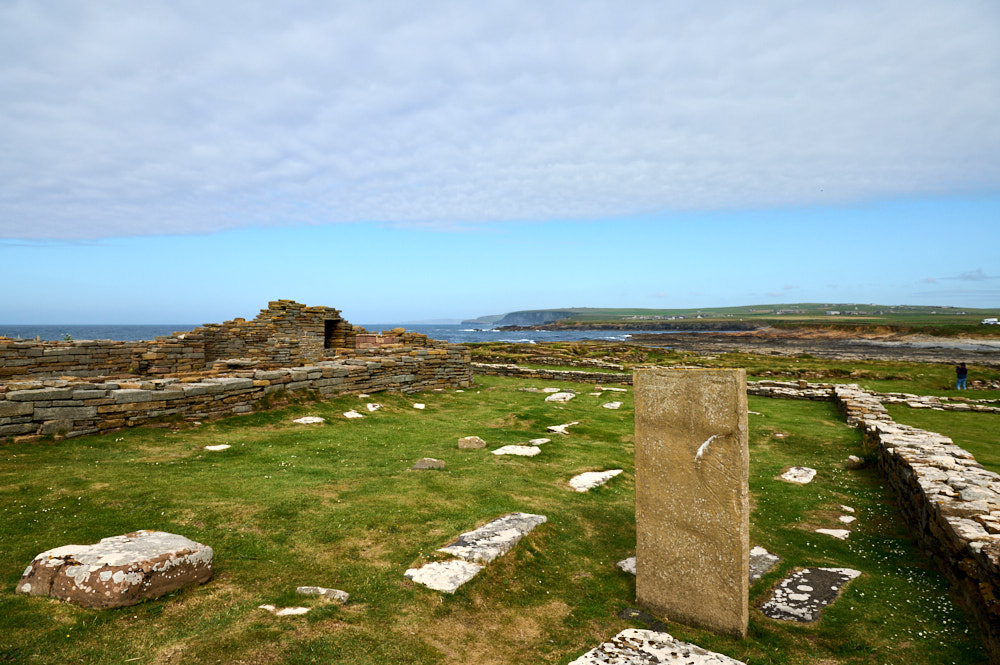
A collection of buildings from the 10th century when the Vikings ruled Orkney and even older remains from the Pictish. It probably even was a centre of power during Pictish times.
Objects found here tell us that the site was a high status settlement for all of its life. Birsay was probably a Pictish power centre, and the village itself is likely the site of the first Orcadian bishopric (diocese) and seat of the earldom of Orkney. (Historic Enviroment Scotland)
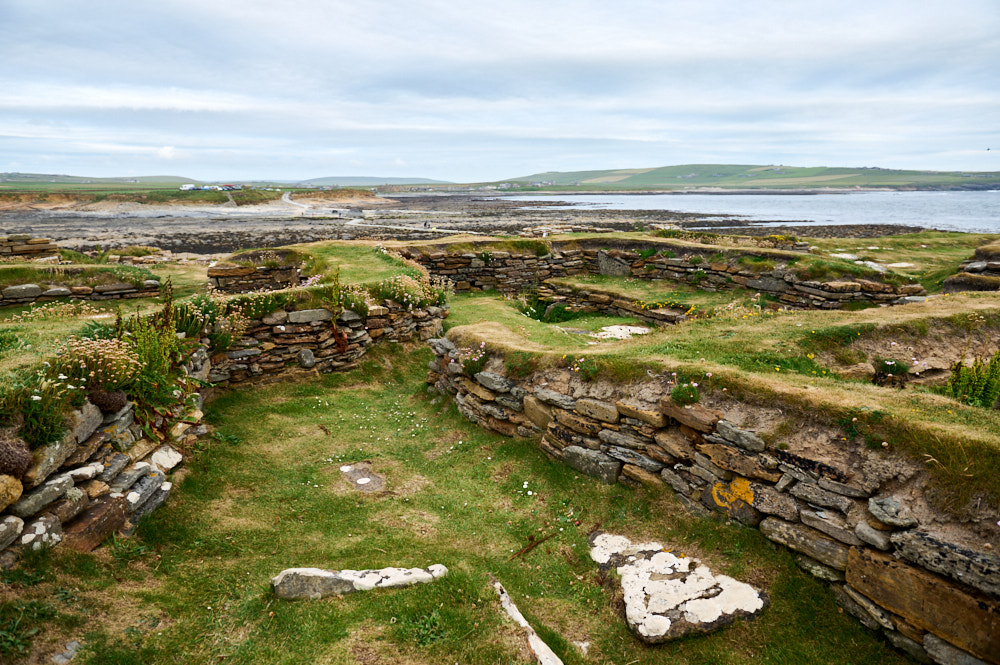
“brough” and “birsay” come from Old Norse words, meaning “fort” but their meanings are slightly different.
‘Brough’ refers to the natural defences of the island. ‘Birsay’ (previously byrgisey) means an island accessible only by a narrow neck of land. (Historic Enviroment Scotland)
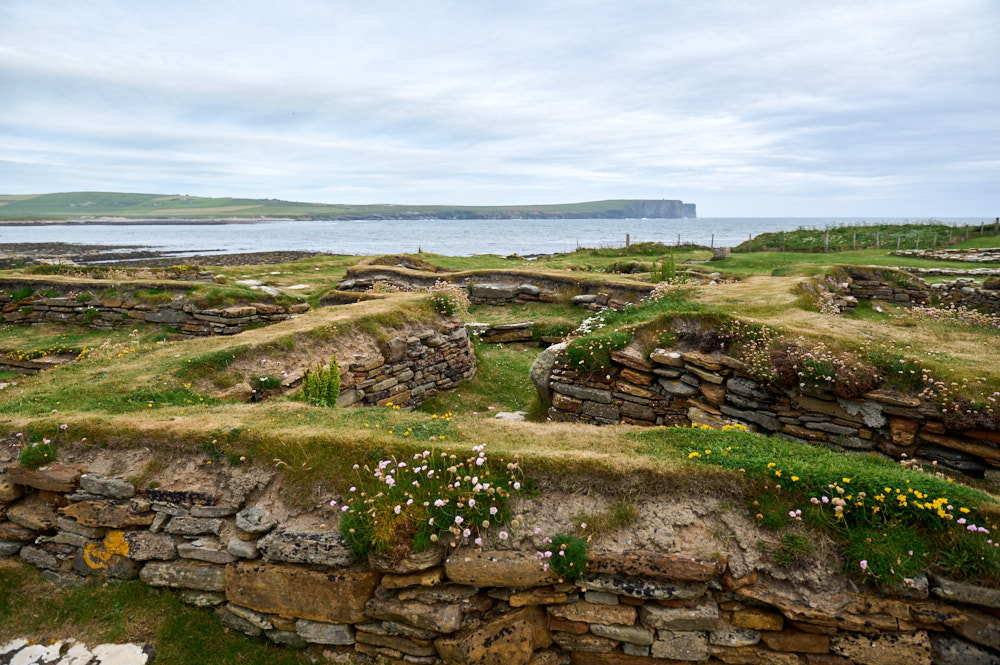
The Pictish lived on the Island of Birsay in the late 7th century, one of their main (still visible) reminders is a standing stone with Pictish symbols. And there is also a small well next to the church. Pictish brooches, pins, rings and bone combs were found, even under the Norse houses.
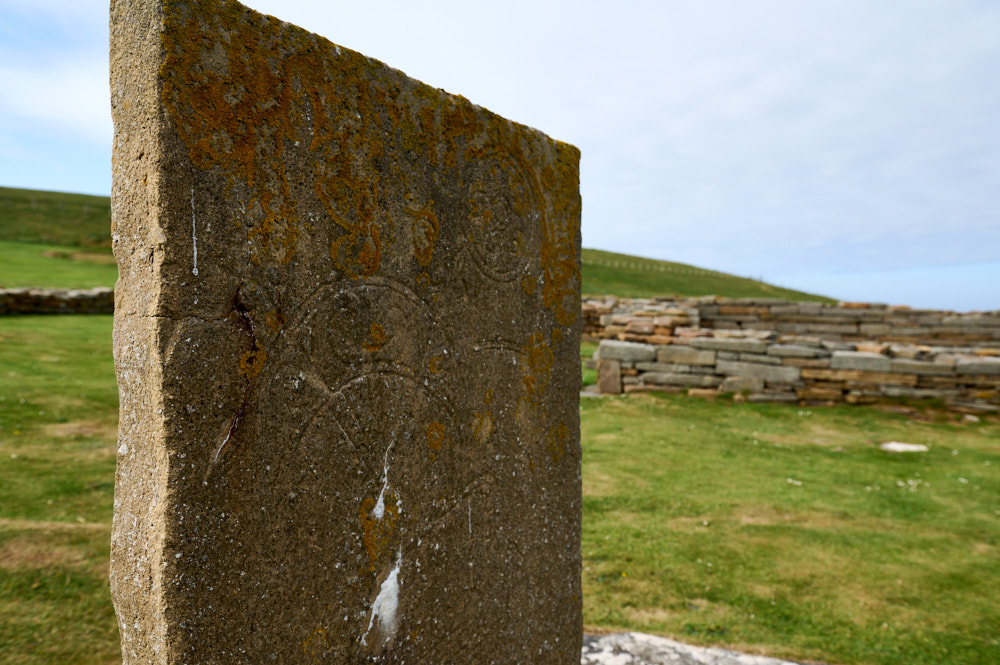
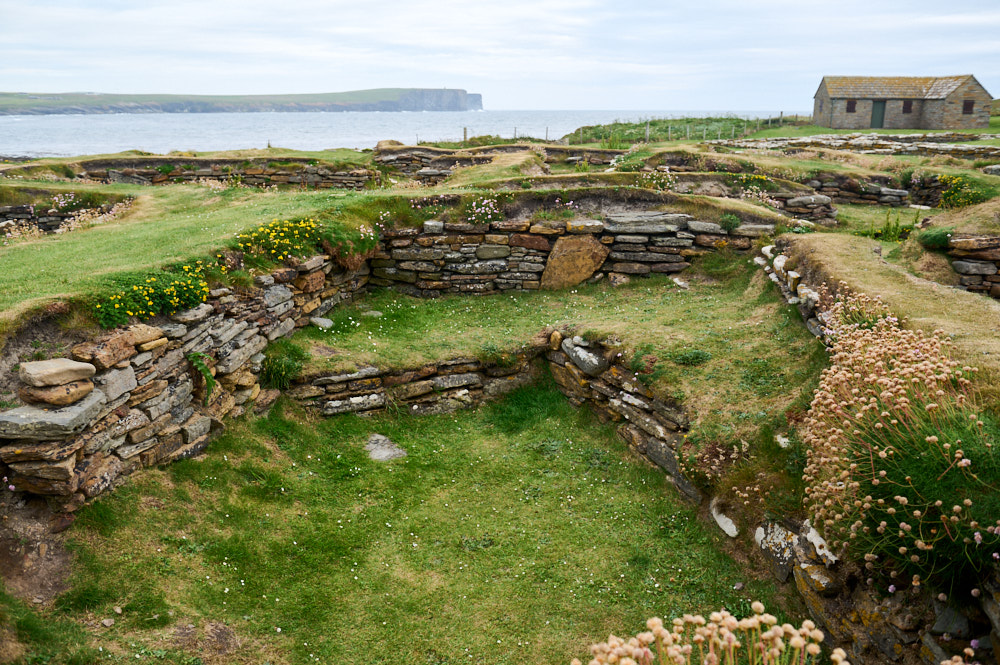
The Vikings settled on the brough in the early 9th century and stayed for around 300 years with a growing settlement.
The building and rebuilding has left a complex maze of walls – one on top of the other – between the later churchyard and the sea. (Historic Enviroment Scotland)
We still see individual rooms of houses, a house with underfloor heating and the remains of a workshop and sauna.
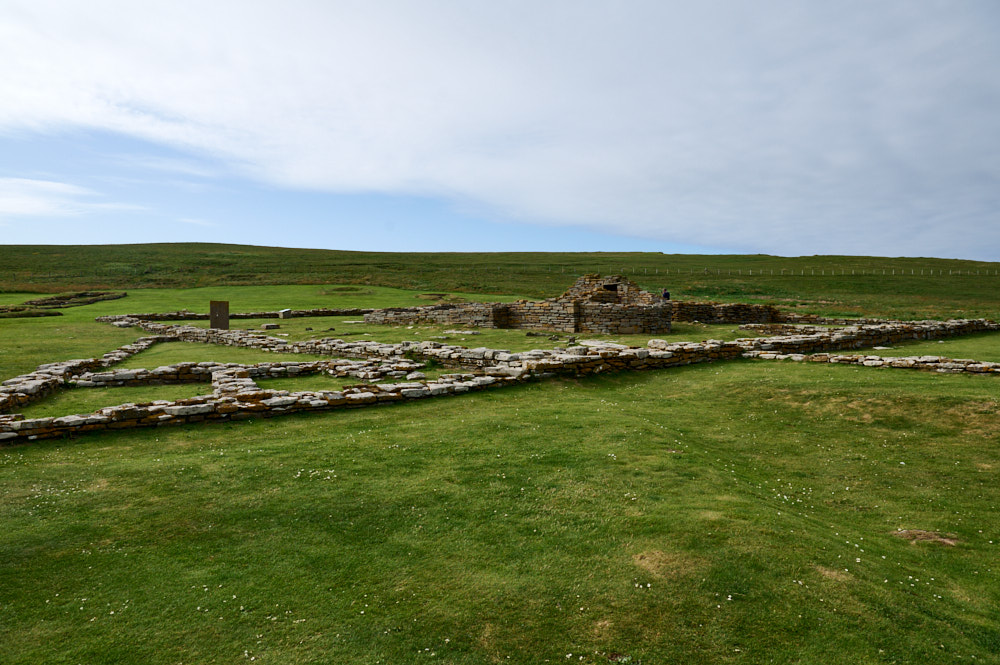
A small church and what appears to be a monastery were built in the final phase. Apart from St Magnus Cathedral in Kirkwall, this is one of the most sophisticated medieval ecclesiastical buildings to survive in the Northern Isles. ( Historic Enviroment Scotland)
walking Birsay
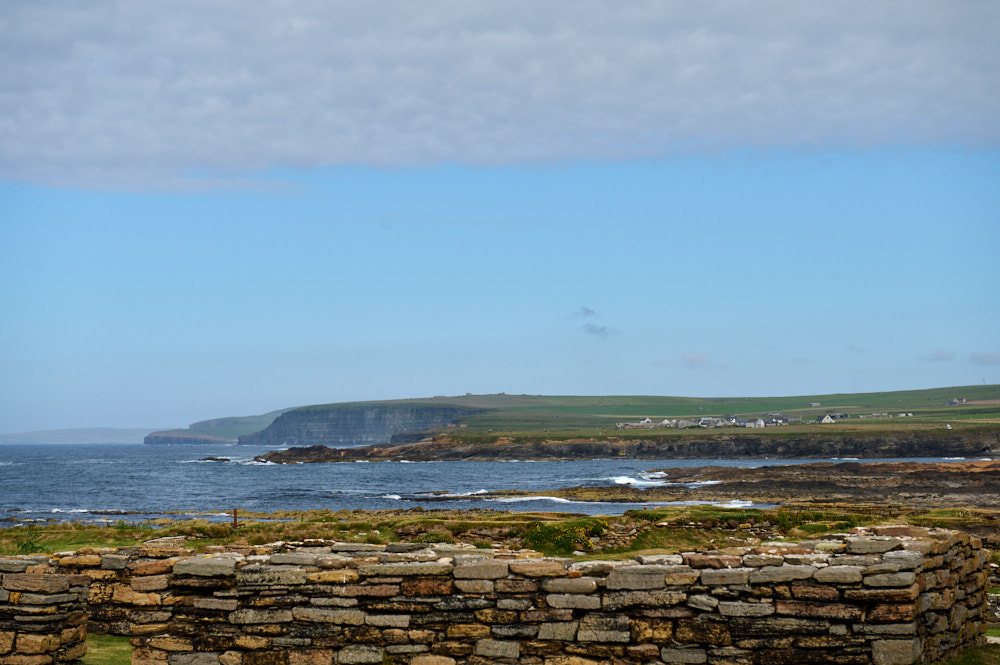
I started my round around the Island, it is an easy walk along the cliffs with stunning views across the sea and the headland and many, many birds.
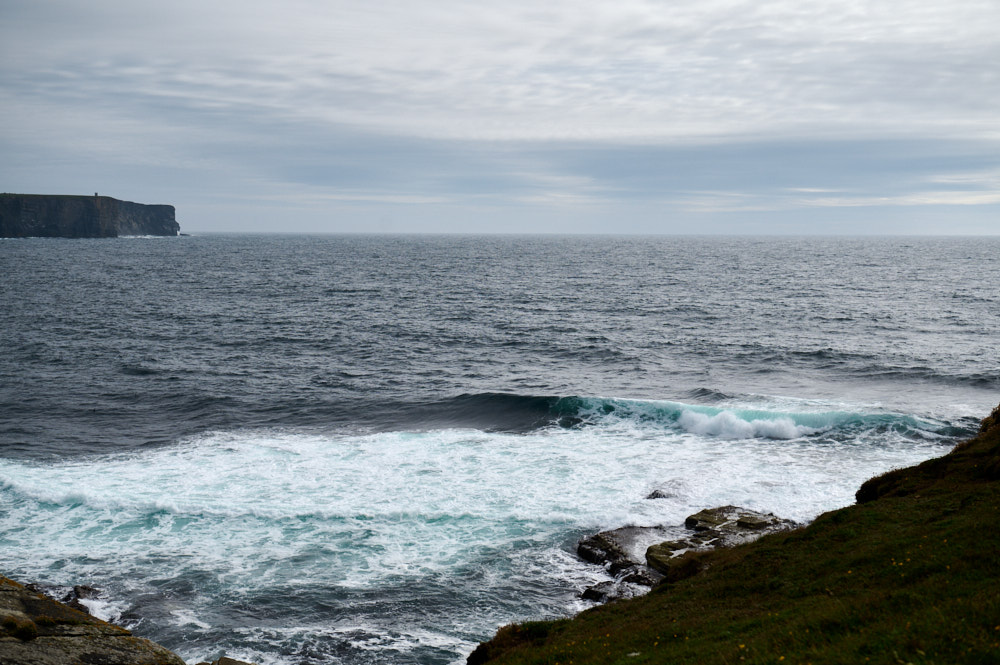
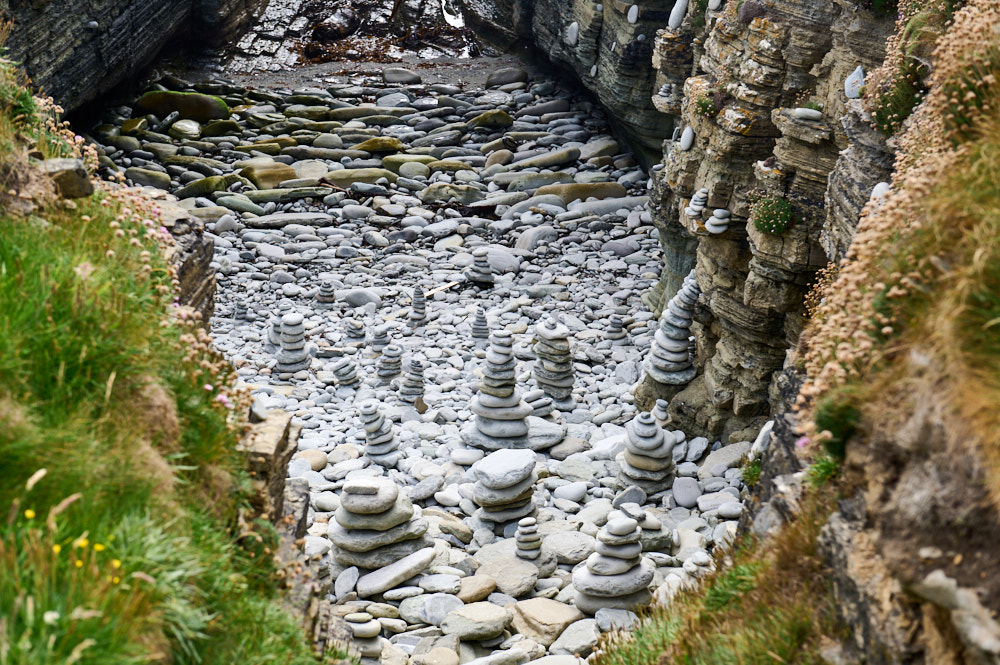
Stacking stones – nobody knows who and why this was started, but it is best to not do it! It exposes the soil to erosion, aesthetically intrudes upon the natural landscape (like seen here), and serves no purpose at all! Often locals have to be the ones putting the stones back down.
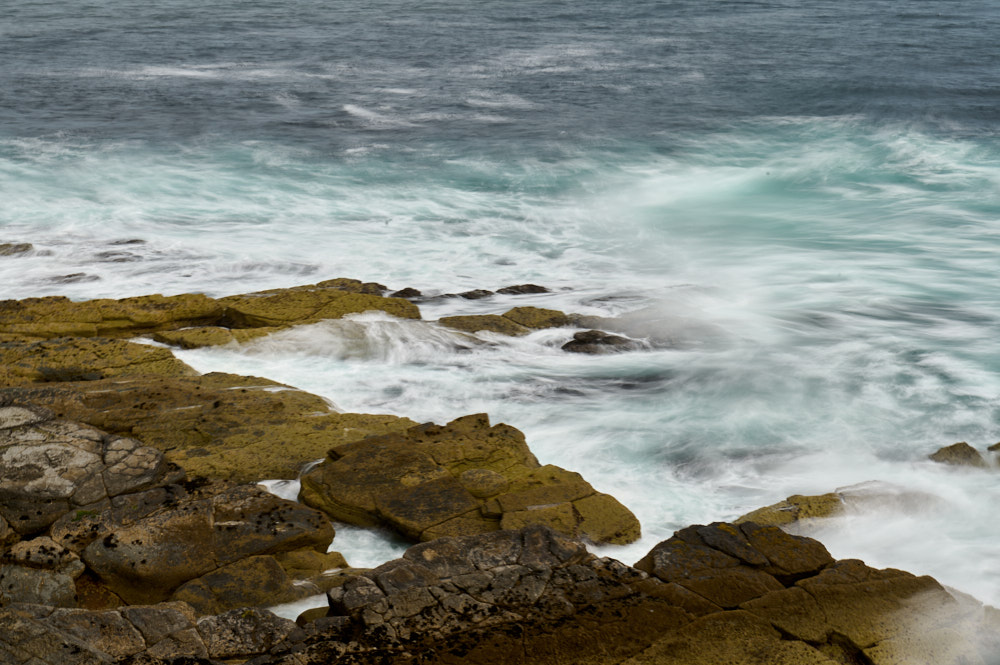
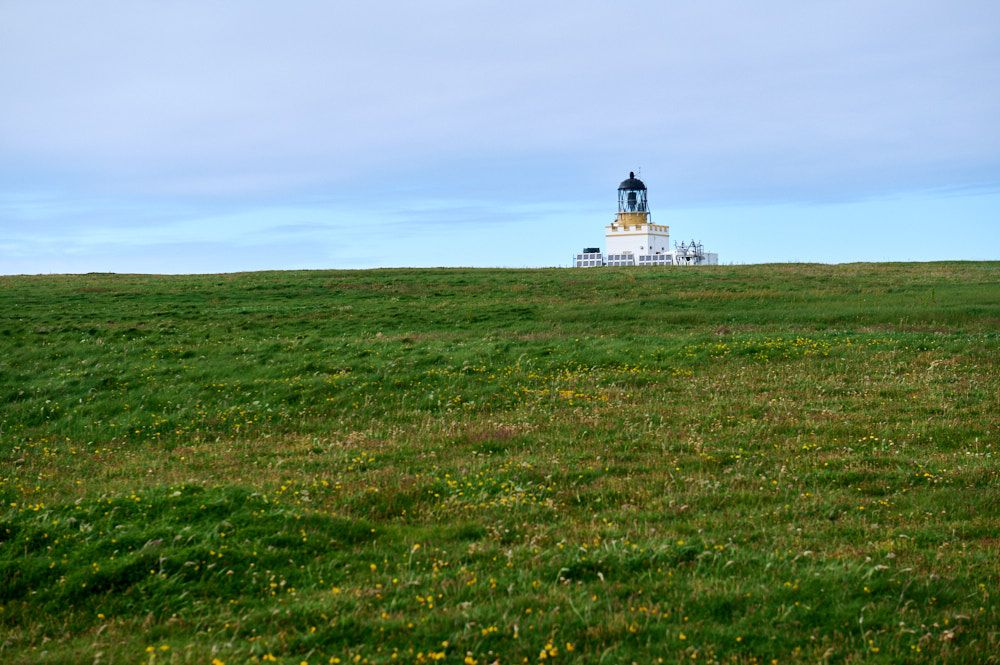
The lighthouse was built in 1925 by David A. Stevenson, who built 26 lighthouses in his lifetime, it is unmanned.
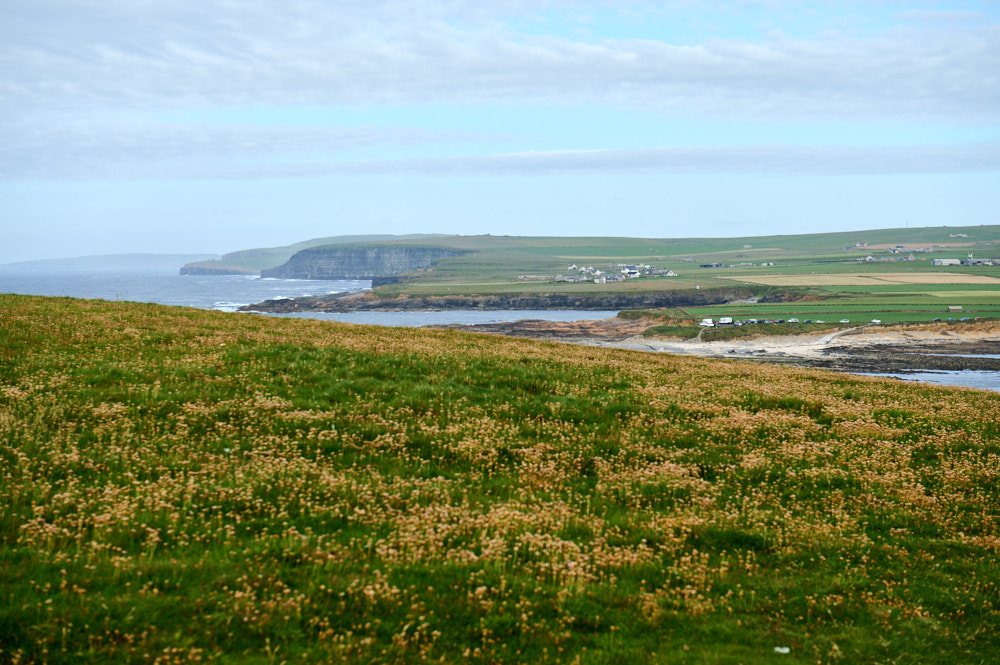
Puffins
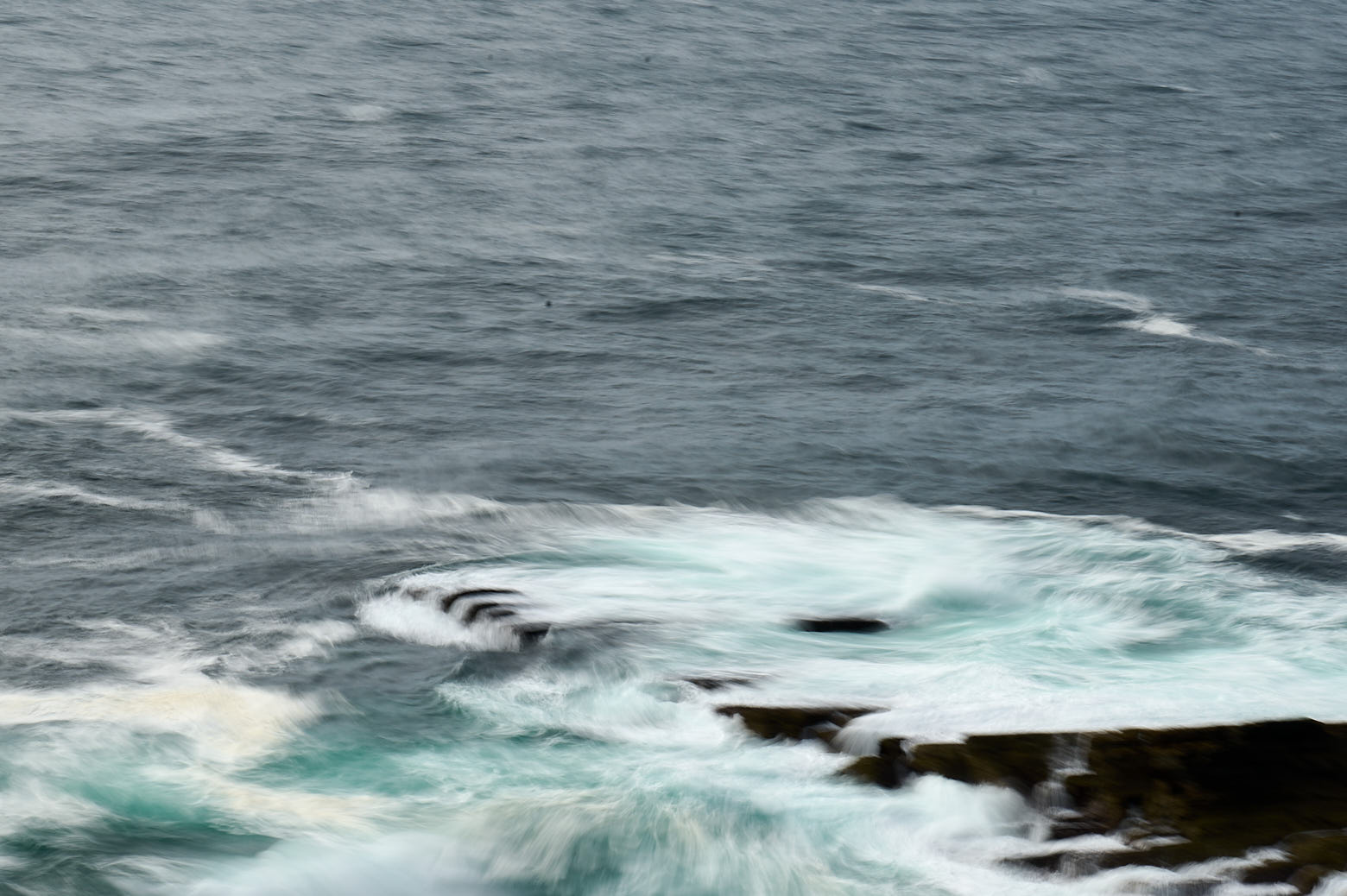
Birsay is one of the best places in Orkney to spot Puffins – they nest here in the cliffs between the months of May through to July each year. My host gave me the tip to lay down and look down on the cliffs, otherwise it is hard to spot them. And I got lucky and spent th
